|
.55", Boys Anti-Tank rifle. Mark 1, Mark 1*, Mark 2
(U.K. and Canada)
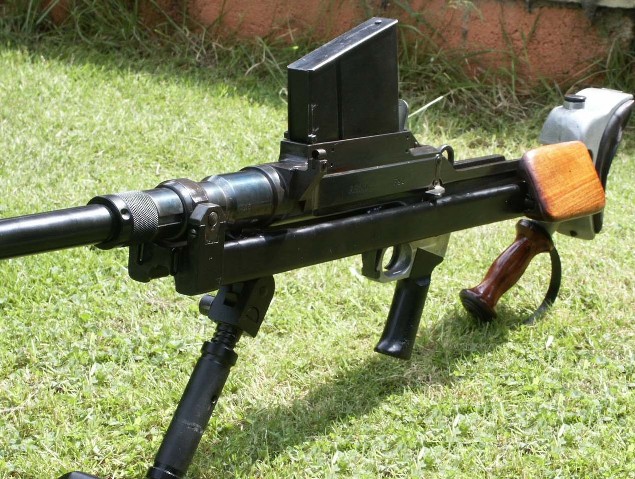
Picture of MK1 Boys converted to .50BMG
The. 55 inch Boys Anti Tank Rifle
The Boys Anti Tank Rifle is a large rifle with a padded butt, pistol grip,
walnut cheek piece, an over-the-barrel 5 round magazine, an integrated mono-pod and oiler in
the aluminium butt stock. The barrel and receiver are free to recoil
approximately 1" against a large buffer spring. Early rifles had a rear
sight with both a 300 yard and 500 yard setting with interchangeable
sight elements, later rifles (Mk1* see picture below) were fixed at 300 yards. Designed at the
Royal Small Arms factory at Enfield, and named after one of its principal designers
Captain Boys, this gun was the primary anti tank weapon of British
infantry until it was replaced by the PIAT
shaped charge weapons in 1943. Originally called the Stanchion rifle, only a
couple of minor modifications such as the lengthening of the bolt handle
were required before mass production started at Enfield and BSA. It was
widely used in campaigns against the Axis armies in France, Greece, North Africa
and China in the early part of the war. While effective
against the 1930s tanks, it was - due to its
bolt-action design - slow to operate and outclassed by the heavy armour
on later tanks such
as the PzKpfw III. The later instruction manual (1942) states the
limitations of the rifle on the first page, unlike the original 1937
edition which makes no mention of the limitations. The 1942 manual also
hints at future modifications that would form the MK1* and MK2 versions.
Two prototype 13.2mm BESA versions of the rifle were developed, its not
yet clear as to why.
In late 1939 on the outbreak of the Winter War on the Eastern Front, international sentiment
was very much on the Finnish side. The British government donated two
hundred Boys ATRs with the express wish that thirty of them would be
given to Swedish volunteers. The rifles were a remarkable success against
Soviet tanks of pre-war design which had been built to withstand
small-arms fire only.
In late 1940 Finland aquired 200 Boys ATRs from German captured stocks.
The rifles were used on the front in the beginning of the Continuation
War in 1941 but were gradually withdrawn by the end of 1943. It is
claimed that 300 surviving examples were kept in storage until the mid Fifties when they were sold
to collectors. The rifle was also phased
out of service by the Commonwealth forces by December 1943 with the
widespread introduction of the PIAT once ammunition became readily
available.
The rifles were also often used on 'Universal
Carriers', and 2 were mounted on a 15" narrow gauge train that once
ran along the south coast of England, near the FCSA's beloved Lydd
ranges (actually the train still does run, but sadly without the
rifles!) Check out the picture halfway down this webpage - video footage
also exists .
http://www.rhdr.org.uk/rhdr/history.html
To assist training of
troops in the use of such a large calibre rifle - which exceeded most
gallery range danger templates - two ingenious devices were
manufactured, one being a system of brackets that enabled a .22 SMLE
rifle to be attached to the right side of the rifle (as described in the
1937 Australian edition of the Small Arms Training manual), and then a
much neater solution manufactured by Parker Hale which used a
piece of .22 barrel that had been machined to the external profile of a
live .55 round, this contained a small 'firing plug' (striker) in the
base that would transmit the central impact of the firing pin to a
double edge strike required for the rimmed .22 case. Canada had a
similar device made by the Cooey Machine & Arms Company, 77,000 were
produced and named the "Cooey conveyor". The fired .22 case was then
removed with an expeller rod. Accuracy was acceptable for the distances
it was used. A picture of rubber target tanks as used with the .22
conveyor to follow soon.
The MK1* rifles were made by Inglis in Canada
(see footnote) and apart from being parkerised rather then blued like
the British made rifles, also incorporated a bipod rather than a
mono-pod and a carrying handle, they also utilised the flat 'harmonica'
muzzle break, 5 ports per side.
This was a much more effective design, both in terms of recoil
reduction, but also had less of a tendency to spray the shooter with dirt and dust
when firing in the prone position.
The MK2 versions were lighter and had a
shorter barrel, there were predominantly used in North Africa by
airborne troops, very few survived.
As an interesting
side note, Disney were commissioned in WW2 to produce a training film
on the Boys anti-tank rifle called "Stop that Tank" in the War-time
shorts series. At long last this is now available as a limited edition
DVD and well worth a watch! The film starts with an animated 'comedy'
Adolf Hitler driving a tank and being stopped in his tracks by the
boys rifle, then goes onto film footage of a soldier loading and
unloading, firing the rifle, cleaning and basic stripping.
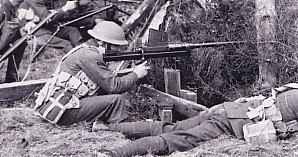 Left: Boys rifle with Flat muzzle break
Left: Boys rifle with Flat muzzle break
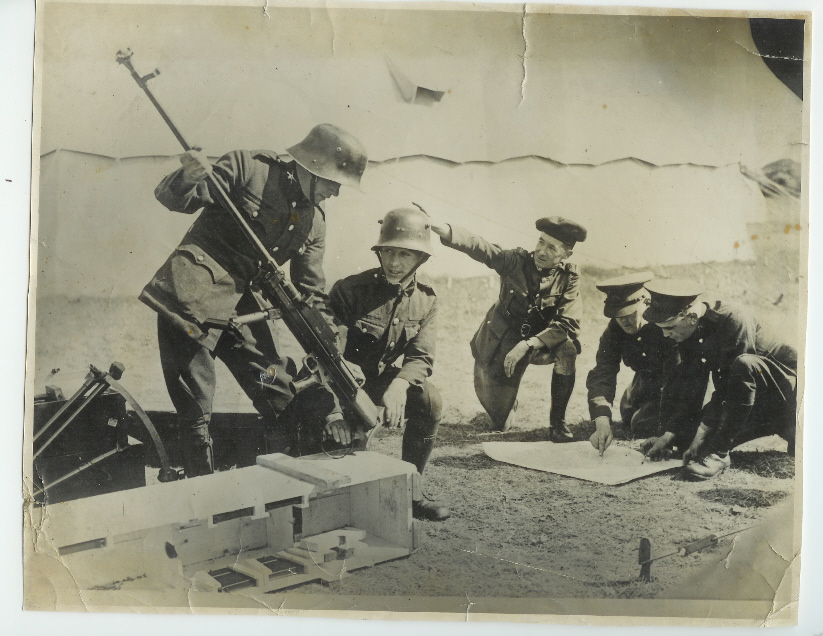
Above: Very rare picture of an early Boys rifle
and its transit box, it would appear to hold 6 or 8 magazines. This photo was
sent to me with the title 'Irish soldiers training on the Boys rifle'
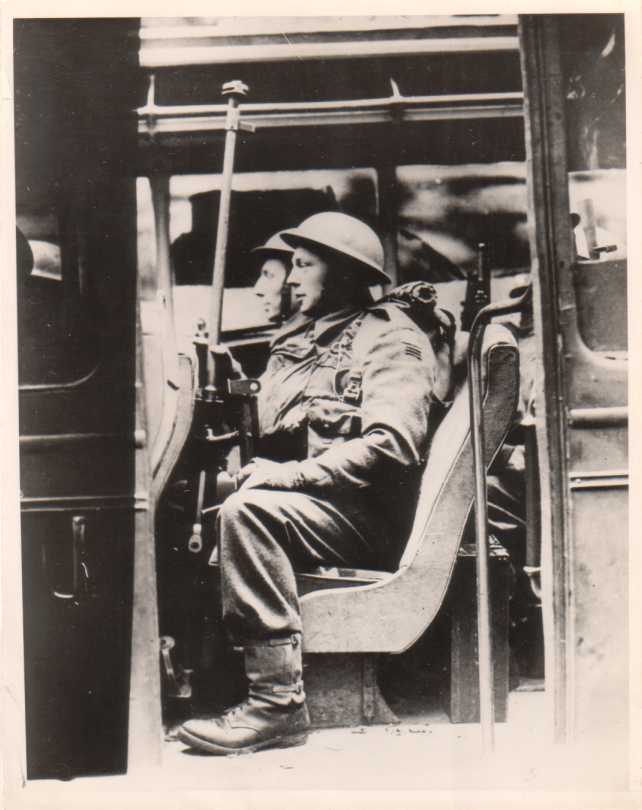
Above: I wouldn't recommend taking your Boys
rifle on the bus in this day and age!
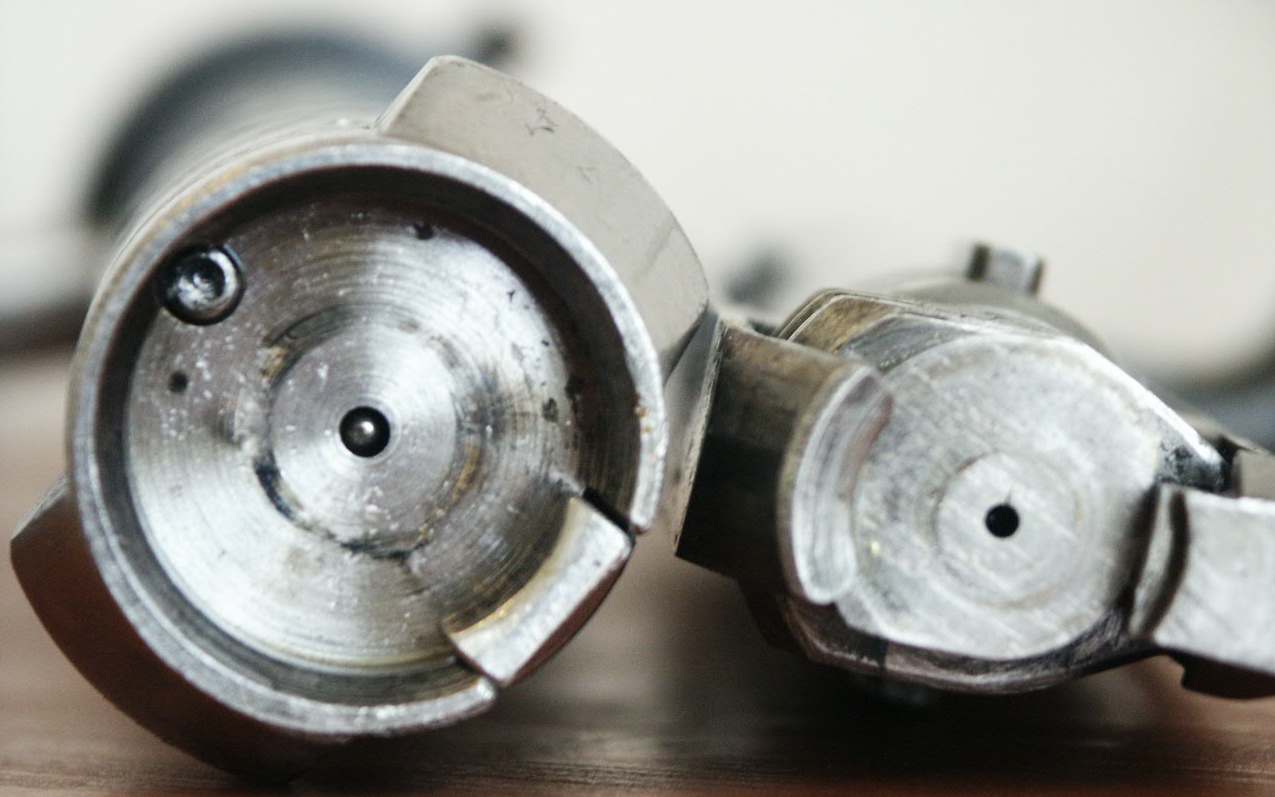
Above: Note the massive difference in size between the
Boys bolt face (right) and the PTRD bolt face
*
John Inglis Company at Long Branch, Toronto. The Inglis Company employed 17,000
workers and turned out more machine guns during the war than any other
individual firm in the British Empire, a total of some half-million weapons
comprising of Bren guns, Browning aircraft machine guns and 38,000 .55 calibre
Boys anti-tank rifles.
Pictures of MK1* rifle (taken at the Royal
Armories, Leeds UK) Note the revised non-adjustable rear sight and
bipod:
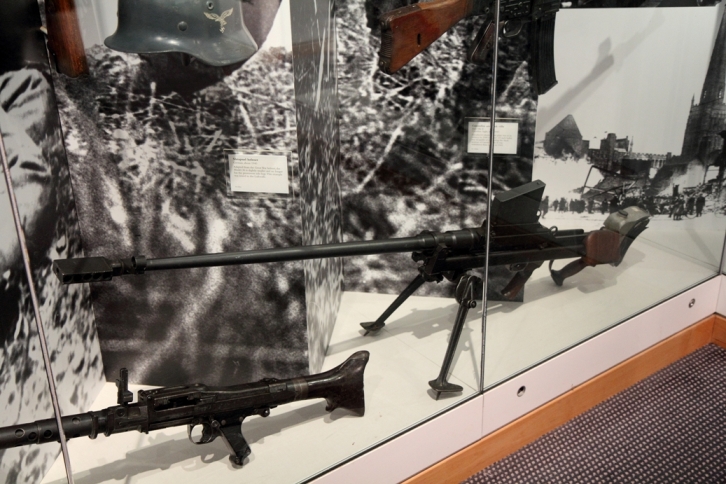
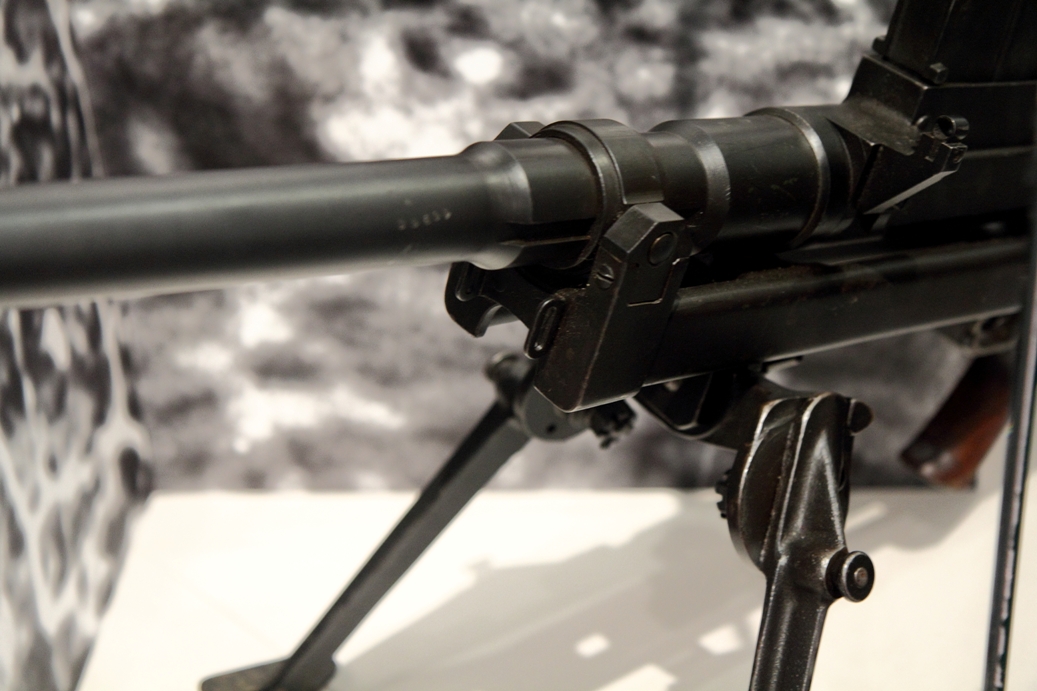
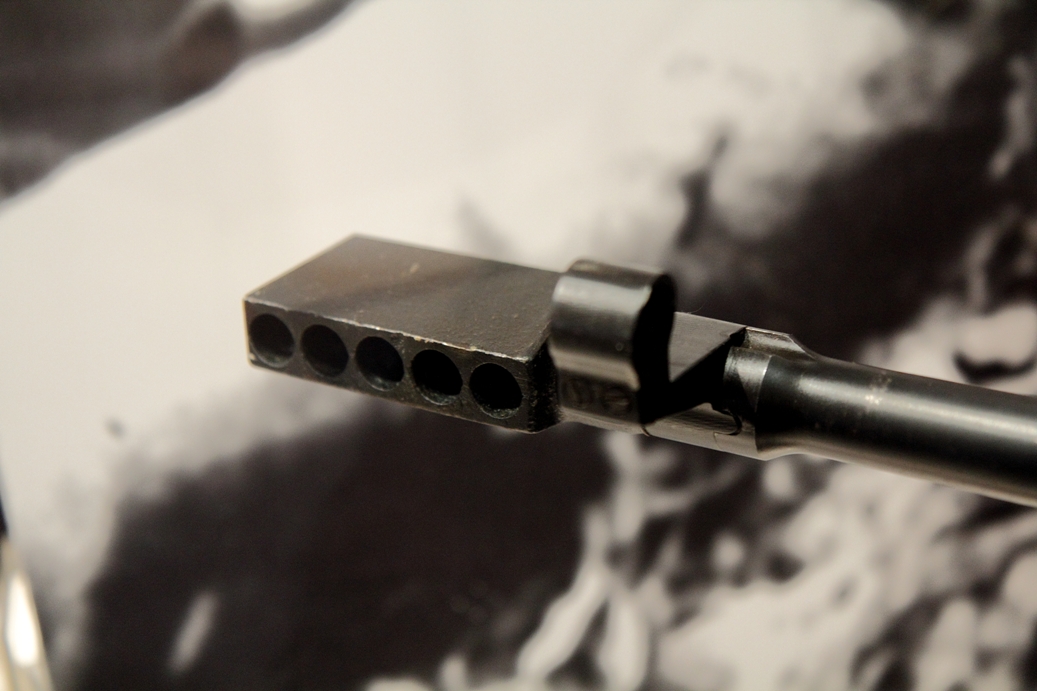
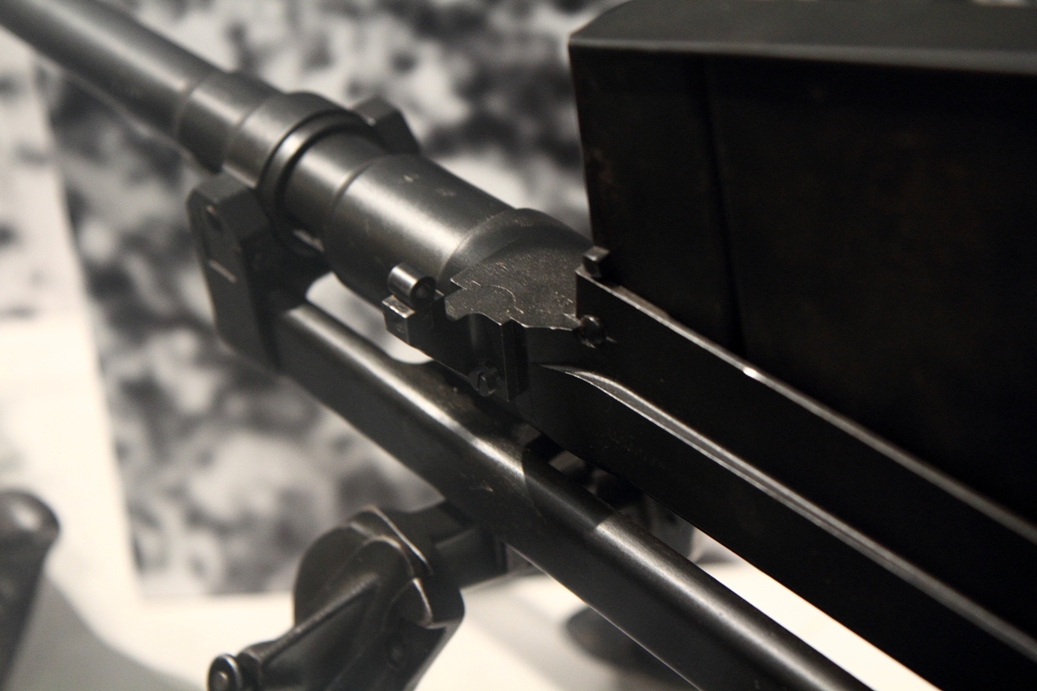
Link to the Ammunition
for the Boys rifle
Link to Accessories and
Parts for the Boys rifle
<<Back
|

